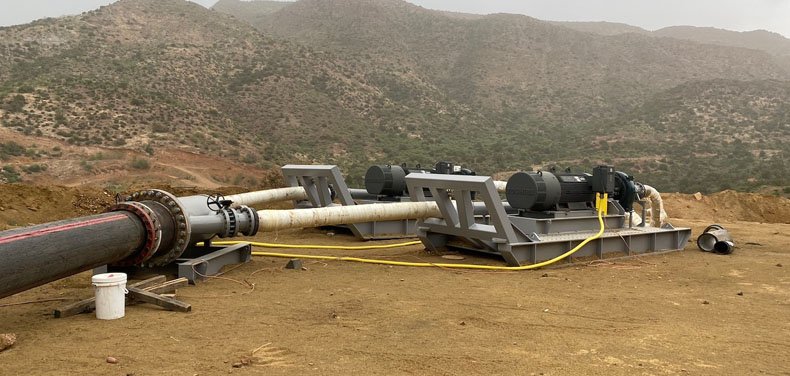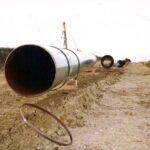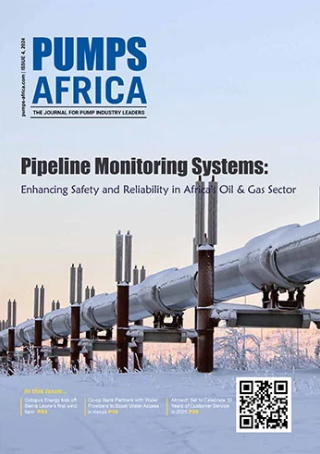Pump operations play a crucial role across various industries, including oil and gas, water treatment, and HVAC systems. These systems are essential for transporting fluids, managing processes efficiently, and ensuring the delivery of necessary resources. Each industry employs specific types of pumps, such as centrifugal pumps, positive displacement pumps, and submersible pumps, each designed for distinct applications and fluid types. However, while pumps are vital infrastructures, they are also associated with considerable environmental impacts.
The energy consumed during pump operations is a significant factor contributing to the overall operational costs and environmental footprint. For instance, in the oil and gas sector, energy usage is often high due to the need for continuous operation under challenging conditions. Water treatment facilities also consume substantial amounts of energy, primarily for the movement and treatment of water, which impacts the carbon footprint of these facilities. In HVAC systems, the efficiency of pump operations affects not only energy consumption but also the environmental sustainability of buildings and facilities.
Waste generation during pump operations is another concerning aspect. Pump systems can produce waste ranging from mechanical wear debris to chemical residues, depending on the substances being transported. Environmental implications are significant, as these wastes can contribute to pollution in local ecosystems, leading to broader ecological concerns. Moreover, greenhouse gas emissions are a direct consequence of the energy-intensive nature of pumps, raising critical questions about resource depletion and sustainability. Case studies indicate that optimizing pump operations can significantly reduce energy consumption and emissions, highlighting the urgency of addressing these environmental impacts for a more sustainable future.
Strategies for Reducing Energy Consumption in Pump Operations
In today’s industrial landscape, minimizing energy consumption in pump operations is not only a matter of economic efficiency but also a crucial step towards reducing environmental impact. Various strategies can be adopted to achieve significant energy savings. One of the foremost solutions is the implementation of energy-efficient pump technologies, such as variable frequency drives (VFDs). VFDs enable precise control over pump motor speeds, allowing operators to match pump output to actual system demand rather than running at a constant speed. This adaptability leads to substantial energy savings, particularly in applications where fluid demand fluctuates.
Choosing the appropriate size and type of pump is another vital strategy. Oversized pumps often operate at part load, leading to inefficient energy use. By performing a thorough assessment of operational requirements, industries can select pumps that are optimally sized for their applications. Additionally, considering alternative pump designs, such as centrifugal or progressive cavity pumps, can yield further energy savings based on specific operational needs.
Regular maintenance and performance monitoring cannot be understated in their importance. Scheduled maintenance ensures that pumps operate efficiently, as worn components can lead to increased energy consumption. Employing technologies such as condition monitoring systems can help identify inefficiencies before they escalate into costly breakdowns. Furthermore, training employees on proper pump operation and maintenance can foster an energy-conscious culture that prioritizes efficiency.
Real-world examples illustrate the success of these strategies in reducing energy consumption. For instance, a manufacturing facility that integrated VFDs into its pump system reported a 30% reduction in energy costs. Similarly, another company that undertook a comprehensive pump sizing assessment achieved a 25% decrease in energy expenditures within the first year. These examples demonstrate that with the right strategies in place, industries can significantly reduce their energy footprint while maintaining operational efficiency.
Innovative Technologies Aiming for Sustainable Pump Solutions
The field of pump operations is witnessing a remarkable transformation as innovative technologies emerge, paving the way for sustainable solutions. One of the most significant advancements is the introduction of smart pumps, which incorporate sophisticated sensors and controls to optimize performance and energy consumption. By continuously monitoring a pump’s operation through real-time data, these systems can promptly respond to variations in demand, ensuring efficient use of resources while minimizing energy waste.
Furthermore, the integration of the Internet of Things (IoT) in pump technologies has revolutionized the ability to conduct real-time monitoring. IoT-connected pumps allow operators to track their performance remotely, facilitating proactive maintenance that prevents failures and reduces downtime. This not only enhances operational efficiency but also contributes to a lower environmental footprint. With detailed analytics at their disposal, operators can make informed decisions regarding energy use and resource allocation, ultimately leading to more sustainable practices.
Automated systems, another key innovation, streamline operations by minimizing human intervention. These systems use algorithms to determine the optimal pump settings based on current conditions, maximizing efficiency while reducing waste. As automation becomes more prevalent in the pump industry, the potential for significant reductions in energy consumption and material usage increases, aligning operational practices with sustainability goals.
Moreover, the shift towards eco-friendly materials in pump construction is gaining traction. Manufacturers are now exploring alternative materials that not only reduce the carbon footprint but are also durable and efficient. Additionally, the emergence of solar-powered pumps exemplifies the potential of renewable energy sources in reducing operational impact. Such advancements assure substantial long-term benefits, not just for the environment but also in reducing operational costs, ensuring that sustainability and efficiency go hand in hand.
Best Practices for Implementing Environmental Initiatives in Pump Operations
Incorporating environmental initiatives in pump operations requires structured approaches that foster sustainability and reduce the overall ecological footprint. A pivotal step in this process is conducting thorough environmental impact assessments (EIAs). These assessments help organizations identify areas where pump operations may adversely affect the environment. By understanding these impacts, companies can develop targeted strategies to mitigate them, ultimately leading to more sustainable practices.
Setting clear sustainability goals is another crucial best practice. Organizations should focus on establishing measurable objectives that guide their environmental initiatives. This may include targets for energy consumption reductions, waste recycling rates, and water usage optimization during pump operations. By aligning these goals with industry standards and regulations, companies can ensure compliance while striving for continuous improvement.
Employee involvement programs play a vital role in the successful implementation of environmental initiatives. Engaging staff through training and awareness campaigns fosters a culture of sustainability within the organization. Employees are more likely to contribute to eco-friendly practices when they feel invested in the company’s goals. Moreover, organizations should consider establishing partnerships with environmental organizations, which can provide valuable resources, expertise, and support in developing best practices for pump operations.
Policies and regulations are instrumental in driving positive environmental change. Organizations must stay up-to-date on current legislation and strive to exceed these requirements. Cultivating relationships with regulatory bodies can enhance compliance efforts and encourage proactive initiatives. To ensure ongoing commitment, it is essential to measure progress regularly. Utilizing performance metrics and reporting frameworks allows organizations to assess the effectiveness of their sustainability strategies.
Success stories from various sectors showcase the potential of these practices. Companies that have adopted comprehensive sustainability initiatives often report significant reductions in their environmental footprint, underscoring the efficacy of these best practices in pump operations.







